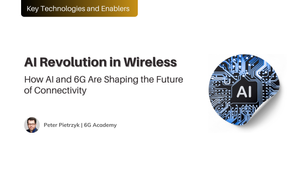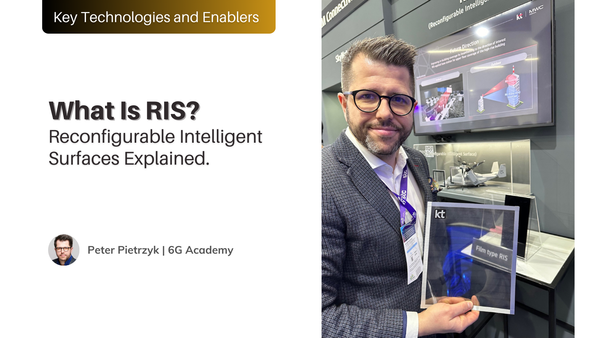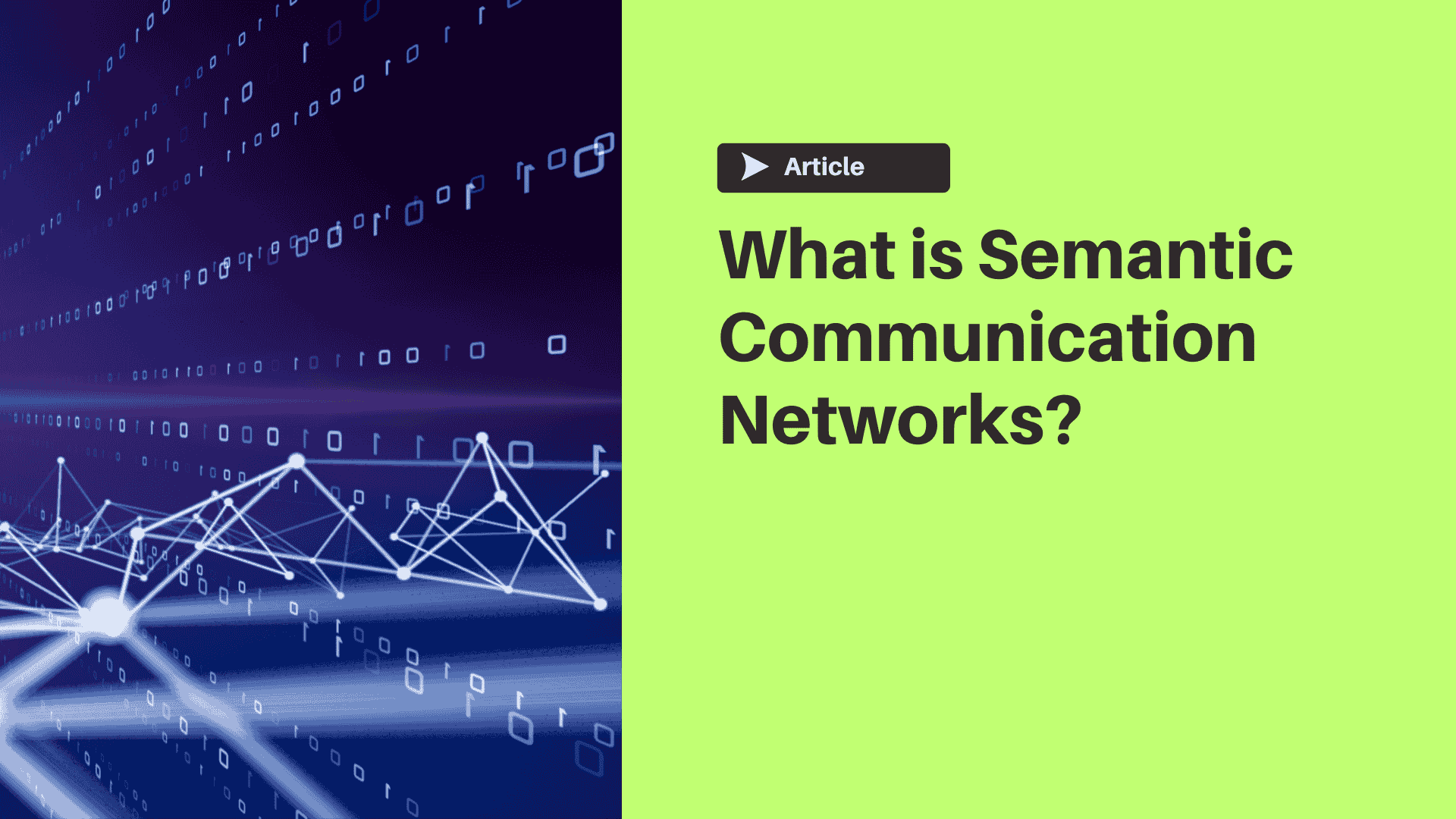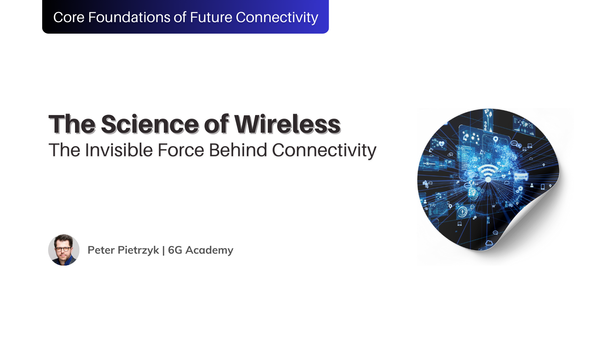👋 Hi, this is Peter, bringing you a comprehensive dive into Post-Quantum Security (PQS) and its growing importance, especially in the context of telecom networks and the emerging 6G landscape. If you're working in engineering, network architecture, or telecom in general, consider this your guide to navigating the complex world of quantum-safe technologies. Make sure you are a Free Member of 6G Academy - if not - join here.
Why should you care?
Quantum computing is closer than we think, and when it arrives, it will have the power to crack the cryptography that secures today’s telecom systems. Think of the encrypted data flowing through 5G and future 6G networks—whether it’s sensitive government communications, financial transactions, or private messages. Without post-quantum security measures in place, everything could be exposed.
If you’re here for the technical details and what they mean for your role in telecom, buckle up. This article is long, thorough, and practical. It's designed to give you a complete understanding of where we are with post-quantum cryptography (PQC), why it's essential for future connectivity, and what you can do to prepare.
What is Post-Quantum Security?
Post-Quantum Security (PQS) refers to the development of cryptographic methods that can withstand attacks from quantum computers. Currently, most encryption techniques used in telecom (and beyond) rely on mathematical problems that classical computers struggle to solve—like the prime factorization problem in RSA or the elliptic curve problem in ECC (Elliptic Curve Cryptography).
Here’s the problem: quantum computers, with their exponentially greater computational power, can break these classical cryptosystems. Algorithms like Shor’s algorithm can solve the prime factorization problem much faster than any classical computer could, effectively rendering RSA and ECC obsolete.
With Shor’s algorithm, a sufficiently powerful quantum computer could decrypt data protected by RSA or ECC in minutes—data that would take classical computers thousands of years to decrypt. Grover’s algorithm is another quantum computing technique, cutting the time needed to brute-force symmetric encryption in half, thus making even our most secure encryption systems less secure.
And that’s where Post-Quantum Cryptography (PQC) comes in—it's the race to develop cryptographic algorithms that even quantum computers can't crack.
Why It Matters for 6G and Telecom
Why is PQS so important for telecom, especially with 6G on the horizon?
Let’s start by understanding what’s coming with 6G. With each new generation of cellular technology, we see an exponential increase in speed, data volume, and the complexity of applications running on these networks. 6G is expected to bring ultra-reliable, low-latency communications (URLLC) and enable revolutionary technologies such as:
- Autonomous transportation and real-time remote surgery.
- Immersive extended reality (XR) environments.
- Smart cities where everything is connected in real-time.
- Industrial IoT, where critical systems run on low-latency networks.
All of this will require not just fast and reliable networks, but quantum-resistant security to protect the vast amounts of sensitive data that will flow through these systems. The distributed nature of 6G, where data processing will occur both in the cloud and at the network edge, means that vulnerabilities at any point in the system can have catastrophic consequences.
For telecom professionals, this creates a pressing need to rethink how security is integrated into these new networks, from core infrastructure to the edge.
The Quantum Threat: What Happens If We Don’t Prepare?
Q: “What happens if quantum computing becomes a reality before we’re ready with post-quantum cryptography?”
Great question. Let’s break it down. Quantum computing is not just a problem for tomorrow—it’s a problem for today. Even though we’re still several years away from having full-scale, fault-tolerant quantum computers, the threat is real now.
Here’s the kicker: “Store now, decrypt later” is a significant threat. Hackers are already intercepting encrypted data that they can’t decrypt today, but they’ll store it until quantum computers become available. Then, they’ll decrypt that data retroactively. This is particularly dangerous for industries that need to secure information for long periods, such as government communications, healthcare, and finance.
For telecom operators, this means that data flowing through your 5G or future 6G networks today could be vulnerable to quantum attacks in the future. The potential damage is enormous—exposing everything from consumer data to critical communications infrastructure.
This makes post-quantum cryptography not just a nice-to-have but an urgent necessity.
NIST's Post-Quantum Cryptography Standards: The Good News
Let’s shift gears and talk about some good news. NIST (National Institute of Standards and Technology) has been leading the global effort to develop and standardize PQC algorithms. In August 2024, NIST released its first three finalized post-quantum cryptography standards:
- CRYSTALS-Kyber for key encapsulation (the replacement for RSA key exchange).
- CRYSTALS-Dilithium for digital signatures (to replace RSA and ECC signatures).
- SPHINCS+, another digital signature algorithm offering an alternative in case other methods fail.
These algorithms were chosen after years of rigorous testing and global collaboration. They offer a path forward for quantum-safe encryption and are set to become the backbone of secure communications in a post-quantum world.
But here’s the thing: telecom networks are vast and complex. Migrating to these new cryptographic standards is going to take years of planning, testing, and implementation. That’s why preparation needs to start now.
6G: The Quantum Challenge
Now let’s talk about 6G. 6G promises data rates up to 100 times faster than 5G, with latency as low as 1 millisecond. It will facilitate the deployment of advanced technologies such as massive IoT, real-time AI, and ubiquitous edge computing. But with these advancements come new security risks.
In a quantum world, current cryptographic protocols in 5G and 6G networks are at risk. Let’s break down the specific vulnerabilities and what’s at stake.
- Key Management and Authentication: The core of mobile networks relies on public key infrastructure (PKI) for authentication. PKI is highly vulnerable to quantum attacks because it relies on RSA and ECC, which quantum computers can break. This means that every device authenticated on a 6G network could be compromised.
- VPNs and Secure Tunnels: Telecom networks use VPNs to manage secure communications between core network elements and devices. However, VPN encryption methods are also based on RSA or ECC, making them susceptible to quantum attacks.
- Edge Computing: One of the defining features of 6G will be the widespread use of edge computing. Data processing will be distributed across thousands of edge nodes, often closer to the user. Each of these nodes will need quantum-safe encryption to protect sensitive data being processed and transmitted.\

Preparing for the Post-Quantum Era: What Telecom Engineers Should Do Now
It’s tempting to think, “Quantum computers aren’t here yet. Do I really need to worry about this now?” Yes. Because implementing post-quantum cryptography will take time. The telecom industry is massive, and the migration to quantum-safe protocols won’t happen overnight.
Here are five key steps you should take to prepare your telecom infrastructure for a post-quantum world:
- Inventory Your Cryptographic Algorithms
- Start by taking stock of all the cryptographic algorithms used in your systems today. Identify which systems rely on RSA, ECC, or other quantum-vulnerable algorithms.
- Look beyond the obvious—these algorithms may be embedded deep within protocols or in legacy equipment that hasn't been updated in years.
- Hybrid Approaches
- Begin implementing hybrid encryption models that combine classical cryptography with post-quantum algorithms. These models will offer quantum-resistance without compromising compatibility with current systems.
- Many organizations are already adopting this approach, using CRYSTALS-Kyber for key exchange while keeping AES for symmetric encryption.
- Focus on Cryptographic Agility
- Build systems that are cryptographically agile, meaning they can easily switch between different encryption methods as needed. As quantum-safe algorithms evolve, you’ll need the flexibility to adopt new standards quickly.
- Pilot Quantum-Safe Networks
- Begin testing quantum-safe networks in pilot environments. Focus on critical components of the network, such as base stations, edge computing nodes, and VPN tunnels.
- By implementing CRYSTALS-Kyber and Dilithium in test environments, you’ll be able to evaluate performance and compatibility before rolling them out more widely.
- Invest in Quantum Key Distribution (QKD)
- While post-quantum cryptography will handle most of the encryption needs for 6G, Quantum Key Distribution (QKD) can provide an additional layer of security for the most sensitive communications.
- QKD leverages the laws of quantum mechanics to create unbreakable encryption keys. It’s not scalable for every use case, but for high-priority communications—such as those in national defense or critical infrastructure—it’s worth considering.
Recent Collaborations in Telecom and Connectivity
It’s clear that preparing for quantum-safe networks is a massive task—one that no single company can tackle alone. The good news is that telecom giants and technology leaders have already begun collaborating to address the quantum challenge. Here are some key partnerships driving innovation in this space:
- IBM and Vodafone
- In 2023, IBM and Vodafone announced a partnership to develop quantum-safe services for the telecom industry. They called on the industry to urgently prepare for the quantum era, highlighting that early adoption of PQC would be critical for ensuring long-term security in telecom networks.
- AT&T and Microsoft
- AT&T and Microsoft have collaborated to integrate post-quantum cryptography into cloud infrastructure services that are increasingly vital for telecom. Their joint effort focuses on making cloud-based communication platforms secure against future quantum threats.
- Toshiba and NTT
- Toshiba and NTT have been working on Quantum Key Distribution (QKD) technology to protect telecom infrastructure from quantum attacks. Their collaboration is focused on developing QKD solutions that will complement PQC by providing ultra-secure key exchanges.
- European Telecommunications Standards Institute (ETSI)
- ETSI is one of the most influential standards bodies working to ensure that post-quantum cryptography is adopted across all telecom standards, including 5G and 6G. ETSI has been pushing for the integration of PQC into the broader telecom ecosystem, from mobile networks to cloud platforms.
These partnerships represent just the tip of the iceberg. Expect to see more collaborations as the quantum threat becomes more immediate.
Final Thoughts: The Future of Telecom is Quantum-Safe
Here’s the bottom line: quantum computing is inevitable, and with it comes a seismic shift in how we think about data security. For telecom operators, engineers, and network architects, the time to act is now. Preparing for quantum-safe cryptography isn’t just about securing tomorrow’s networks; it’s about protecting today’s data from future threats.
By taking proactive steps—inventorying cryptographic algorithms, piloting quantum-safe networks, and staying engaged with the latest industry collaborations—you can help ensure that your telecom systems are secure in the face of quantum computing.
The quantum future is coming, and it’s coming fast. Will your networks be ready?
Want to dive deeper into the future of 6G and Quantum-Safe Networks?
If you’re serious about staying ahead in the rapidly evolving world of 6G and quantum security, there’s no better way to equip yourself than by learning from the top minds in the field. Professor Muriel Médard, a pioneer from MIT, has created a game-changing course just for professionals like you, focusing on Towards 6G.
With Prof. Médard’s course, you’ll:
- Get certified and gain cutting-edge knowledge about the future of 6G.
- Learn how to integrate Post-Quantum Cryptography into next-gen networks.
- Understand the intricate relationship between 6G, AI, and security.
- Equip yourself with the skills needed to lead your organization through the quantum revolution.
Don't wait until it’s too late to secure your role in the 6G transformation—prepare now by enrolling in this comprehensive course that will help you stay ahead of the curve.
👉 Get Certified and join Prof. Muriel Médard at 6G Academy. Learn from the best, gain practical insights, and future-proof your career in telecom and connectivity.
Coming Next: Stay Ahead with Advanced Insights
In the next deep dives, we’ll explore more critical topics that will build on your understanding of Post-Quantum Security and help you future-proof your role in telecom:
- Quantum Key Distribution (QKD) vs. Post-Quantum Cryptography (PQC): Which is better for securing telecom networks?
- Hybrid Cryptographic Models for Telecom Operators: Transitioning to quantum-safe systems without disrupting current infrastructure.
- Real-World Case Studies: How leading telecom companies are preparing for quantum threats today.
- Regulatory Changes on Quantum Security in Telecom: What governments and international organizations are implementing to safeguard 6G networks.
- The Role of AI in Enhancing Quantum-Safe Security for 6G: How AI-driven security models can detect and mitigate quantum-based attacks in real-time.
Want full access to all upcoming content?
👉 Subscribe Now to 6G Academy Pro and gain exclusive access to these in-depth guides, plus certifications, expert-led courses, and the latest on 6G advancements. Secure your future in the rapidly evolving world of telecom.









